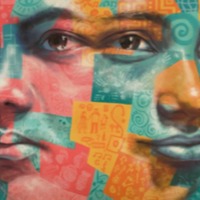
Nour Miyati
There are an estimated 61,000 people living in modern slavery in Saudi Arabia (GSI 2018). It is a source and destination country for men and women trafficked from South and South East Asia and Africa. People voluntarily migrate to the country to work in a variety of sectors including construction and domestic service; many of these workers are vulnerable to forced labour. Traffickers and brokers often illegally recruit migrants to work in Saudi Arabia and subsequently forced them into domestic servitude or debt bondage. Female domestic workers are particularly at risk of trafficking due to their isolation inside private residences. Non-payment or late payment of wages remains a complaint from foreign workers, while employer's withholding of worker's passports remains a significant problem. Trafficking perpetrators include businesses of all sizes, private families, recruitment companies in both Saudi Arabia and labor-sending countries, and organized criminal elements. Nour Miyati had migrated for work twice previously and had good experiences. However the third time she was subjected to physical abuse from her employer, forced to work long hours, had her passport confiscated and was never paid for her labour. When she was finally able to escape Nour filed criminal charges against her employers. The criminal proceedings stretched over three years, while Nour Miyati waited in the overcrowded Indonesian embassy shelter for its resolution. A Riyadh court initially convicted Nour Miyati of making false allegations, sentencing her to 79 lashes, but later overturned this decision. The court dropped charges against her male employer. It sentenced the female employer to 35 lashes for committing abuse, but on May 19, 2008, a judge also dropped the charges against the female employer. That judge still awarded Nour Miyati 2,500 riyals ($668) in compensation, a small fraction of the amounts typically awarded for the types of injuries sustained.
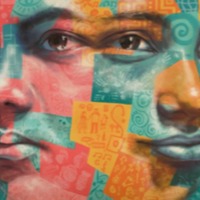
Melody
There are an estimated 136,000 people living on conditions of modern slavery in the United Kingdom (Global Slavery Index 2018). According to the 2017 annual figures provided by the National Crime Agency, 5, 145 potential victims of modern slavery were referred through the National Referral Mechanism in 2017, of whom 2,454 were female, 2688 were male and 3 were transgender, with 41% of all referrals being children at the time of exploitation. People are subjected to slavery in the UK in the form of domestic servitude, labour exploitation, organ harvesting and sexual exploitation, with the largest number of potential victims originating from Albania, China, Vietnam and Nigeria. This data however does not consider the unknown numbers of victims that are not reported. Melody was brought from Nigeria to the UK by a family friend at 12 years old. Upon arrival she was taken to a woman’s house where she was forced to clean every day for long hours under constant verbal abuse. This woman started bringing men to the house to sexually abuse Melody. Melody was kicked out of the house one day when she refused to sleep with one of the men the woman had brought to her. She spent months homeless on the street where she was subjected to further sexual violence. She was finally able to leave her situation with the help of an advisor from Refugee Council.
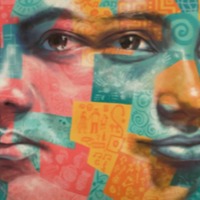
Cyntoia Brown-Long
There are an estimated 403,000 people living in modern slavery in the United States (GSI 2018). Sex trafficking exists throughout the country. Traffickers use violence, threats, lies, debt bondage and other forms of coercion to compel adults and children to engage in commercial sex acts against their will. The situations that sex trafficking victims face vary, many victims become romantically involved with someone who then forces them into prostitution. Others are lured with false promises of a job, and some are forced to sell sex by members of their own families. Victims of sex trafficking include both foreign nationals and US citizens, with women making up the majority of those trafficked for the purposes of commercial sexual exploitation. In 2015, the most reported venues/industries for sex trafficking included commercial-front brothels, hotel/motel-based trafficking, online advertisements with unknown locations, residential brothels, and street-based sex trafficking. Cyntoia Brown Long was 16 years old when she was sentenced to life in prison for the murder of a man who had bought her for sex. Cyntoia had run away from home and met a 24-year-old man who went by the name ‘Kut Throat’. She thought he was her boyfriend and was living with him in motels around Nashville, doing cocaine every day. However, ‘Kut Throat’ trafficked Cyntoia into forced prostitution. If she did not come back with cash, he would beat and rape her. One night in August 2004, Cyntoia was picked up at a fast-food restaurant by a man who agreed to pay her $150 for sex. After arriving at his house, he began showing her his gun collection, making her fear for her life. She later shot him in self-defence. Here she talks about learning that she had been trafficked and being granted clemency.
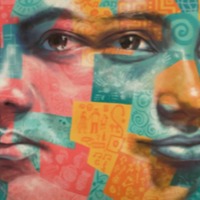
Chepkorir
There are an estimated 328,000 people living in conditions of slavery in Kenya (GSI 2018). While Kenya has committed to eliminate child, early and forced marriage by 2030 in line with target 5.3 of the UN Sustainable Development Goals, 23% of Kenyan girls are still married before their 18th birthday. According to UNICEF, Kenya has the 20th highest absolute number of child brides in the world. Forced child marriage is driven by gender inequality with the belief that girls are inferior to boys. It is exacerbated by poverty, natural disasters and cultural traditions such as female genital mutilation and Samburu whereby a close family relative will approach a girl’s parents with red Samburu beads and place the necklace around the girl’s neck as a form of engagement. Chepkorir was forced to work tending her father’s cattle from a young age, preventing her from receiving any education. When she was 10 years old, Chepkorir’s father arranged her marriage to a 76 year old man. She ran away and found refuge in a church who put her in contact with HAART Kenya. At HAART’s shelter, Chepkorir was able to get an education and secure employment. The COVID-19 outbreak has however led to the postponement of her employment.
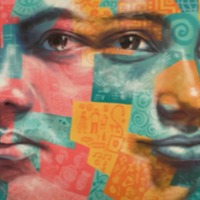
Ram
There are an estimated 610,000 people living in conditions of modern slavery in Thailand (GSI 2018). The country is a source, destination and transit country for men, women and children subjected to forced labour and sex trafficking. Thailand’s commercial sex indusrty remains vast, increasing vulnerabilities for sex trafficking. Children are victims of sex trafficking in brothels, massage parlours, bars, karaoke lounges, hotels and private residences. People are trafficked from other Southeast Asian countries, Sri Lanka, Russia, Uzbekistan and some African countries. It is also a transit country for people from China, North Korea, Bangladesh, India and Burma. Ram ran away from an abusive home and was forced to live on the streets. One day while stealing food from a local market, Ram was kidnapped by a street gang. Ram was forced to steal from tourists during the day and at night was sold for sex to older men. Ram’s exploitation finally came to an end when his trafficker was arrested.
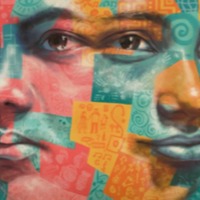
Flora
There are an estimated 403,000 people living in modern slavery in the United States (GSI 2018). Sex trafficking exists throughout the country. Traffickers use violence, threats, lies, debt bondage and other forms of coercion to compel adults and children to engage in commercial sex acts against their will. The situations that sex trafficking victims face vary, many victims become romantically involved with someone who then forces them into prostitution. Others are lured with false promises of a job, and some are forced to sell sex by members of their own families. Victims of sex trafficking include both foreign nationals and US citizens, with women making up the majority of those trafficked for the purposes of commercial sexual exploitation. In 2015, the most reported venues/industries for sex trafficking included commercial-front brothels, hotel/motel-based trafficking, online advertisements with unknown locations, residential brothels, and street-based sex trafficking.Flora was trafficked in to prostitution at the age of 14 when she ran away from home after her mother committed suicide. She left with who she thought was her boyfriend, however within a week he had trafficked her to a different state and she was forced to provide sexual services.
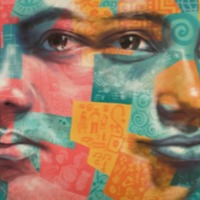
Leah Albright-Byrd
There are an estimated 403,000 people living in modern slavery in the United States (GSI 2018). Sex trafficking exists throughout the country. Traffickers use violence, threats, lies, debt bondage and other forms of coercion to compel adults and children to engage in commercial sex acts against their will. The situations that sex trafficking victims face vary, many victims become romantically involved with someone who then forces them into prostitution. Others are lured with false promises of a job, and some are forced to sell sex by members of their own families. Victims of sex trafficking include both foreign nationals and US citizens, with women making up the majority of those trafficked for the purposes of commercial sexual exploitation. In 2015, the most reported venues/industries for sex trafficking included commercial-front brothels, hotel/motel-based trafficking, online advertisements with unknown locations, residential brothels, and street-based sex trafficking. Leah ran away from home when she was 14 years old. She went to live her drug dealer in Sacremento who soon forced her to ‘contribute to the household’ by providing sexual services. Leah was in the life for four years before she was able to escape. She speaks of the role faith has had in enabling her to work through her trauma.
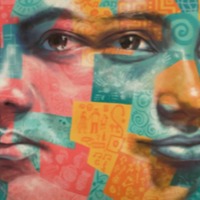
Samantha A
There are an estimated 403,000 people living in modern slavery in the United States (GSI 2018). Sex trafficking exists throughout the country. Traffickers use violence, threats, lies, debt bondage and other forms of coercion to compel adults and children to engage in commercial sex acts against their will. The situations that sex trafficking victims face vary, many victims become romantically involved with someone who then forces them into prostitution. Others are lured with false promises of a job, and some are forced to sell sex by members of their own families. Victims of sex trafficking include both foreign nationals and US citizens, with women making up the majority of those trafficked for the purposes of commercial sexual exploitation. In 2015, the most reported venues/industries for sex trafficking included commercial-front brothels, hotel/motel-based trafficking, online advertisements with unknown locations, residential brothels, and street-based sex trafficking. At 14 years old Samantha ran away from home and became involved with a local gang. She tells of how she was controlled by these people and forced to provide sexual services. The gang controlled when she ate, when she slept and if she showered. Samantha was finally able to escape by jumping out of a car while with a customer.
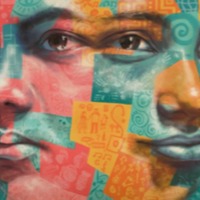
Brittany
There are an estimated 403,000 people living in modern slavery in the United States (GSI 2018). Sex trafficking exists throughout the country. Traffickers use violence, threats, lies, debt bondage and other forms of coercion to compel adults and children to engage in commercial sex acts against their will. The situations that sex trafficking victims face vary, many victims become romantically involved with someone who then forces them into prostitution. Others are lured with false promises of a job, and some are forced to sell sex by members of their own families. Victims of sex trafficking include both foreign nationals and US citizens, with women making up the majority of those trafficked for the purposes of commercial sexual exploitation. In 2015, the most reported venues/industries for sex trafficking included commercial-front brothels, hotel/motel-based trafficking, online advertisements with unknown locations, residential brothels, and street-based sex trafficking. Brittany ran away from home at the age of 10 or 11, after her stepfather became abusive. One day while in a supermarket she met a man who offered her a modelling job. However, instead, Brittany was put in a van, taken to Chicago and forced to provide sexual services for men. She was finally rescued at the age of 14/15 after an undercover police officer visited the brothel. She has now been adopted by a foster family.
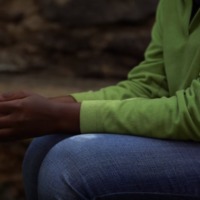
Amani
There are an estimated 328,000 people living in conditions of slavery in Kenya (GSI 2018). While Kenya has committed to eliminate child, early and forced marriage by 2030 in line with target 5.3 of the UN Sustainable Development Goals, 23% of Kenyan girls are still married before their 18th birthday. According to UNICEF, Kenya has the 20th highest absolute number of child brides in the world. Forced child marriage is driven by gender inequality with the belief that girls are inferior to boys. It is exacerbated by poverty, natural disasters and cultural traditions such as female genital mutilation and Samburu whereby a close family relative will approach a girl’s parents with red Samburu beads and place the necklace around the girl’s neck as a form of engagement. Amani was 11 years old when her parents told her she must undergo female genital mutilation and get married. After refusing, one night four men came and took her away to a market. Luckily, World Vision were able to rescue Amani from her situation, however, when she returned to her parents two years later, the same thing happened again. Amani ran away to Nairobi, and there was taken in by HAART Kenya.
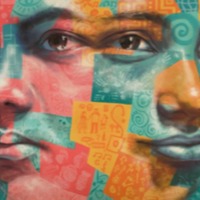
Laila
There are an estimated 136,000 people living on conditions of modern slavery un the United Kingdom (Global Slavery Index 2018). According to the 2017 annual figures provided by the National Crime Agency, 5, 145 potential victims of modern slavery were referred through the National Referral Mechanism in 2017, of whom 2,454 were female, 2688 were male and 3 were transgender, with 41% of all referrals being children at the time of exploitation. People are subjected to slavery in the UK in the form of domestic servitude, labour exploitation, organ harvesting and sexual exploitation, with the largest number of potential victims originating from Albania, China, Vietnam and Nigeria. This data however does not consider the unknown numbers of victims that are not reported. Laila’s family moved from Iran to Cyprus and then to the UK after her mother was diagnosed with Leukaemia. Laila was 12 years old when her mother died, and her father remarried. Her stepmother began planning Laila and her sister’s marriages to older men against their will, fearful that they were becoming too westernised. Not knowing what else to do, Laila and her sisters ran away

Buy
It is estimated that 425,500 people are enslaved in Thailand, with the many subjected to forced labour. Women overseas-workers most often find employment in private households or service sectors, often finding themselves having to pay significant fees for the migration and recruitment process. Domestic servitude is also prevalent with the majority of enslaved being women from rural Thailand, Cambodia, Laos and Myanmar. Victims are often physically and sexually abused, confined to the house and find their pay and identity documents withheld. Buy fled his home in Myanmar after he was forced to join the army and travelled to Thailand. In Thailand, Buy worked for two or three years in the agricultural sector without pay. When he did start asking for the wages that were owed to him, his employers called the police, and because he was undocumented, Buy was arrested. Buy found his way to the Chai Lai Eco Retreat which helps undocumented workers who have been trafficked in Thailand. They assisted him in getting a passport and work permit which ensures he is paid minimum wage.
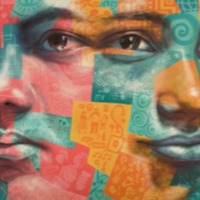
Michaela
Sex trafficking is a form of modern slavery that exists throughout the United States. Traffickers use violence, threats, lies, debt bondage and other forms of coercion to compel adults and children to engage in commercial sex acts against their will. The situations that sex trafficking victims face vary, many victims become romantically involved with someone who then forces them into prostitution. Others are lured with false promises of a job, and some are forced to sell sex by members of their own families. Victims of sex trafficking include both foreign nationals and US citizens, with women making up the majority of those trafficked for the purposes of commercial sexual exploitation. In 2015, the most reported venues/industries for sex trafficking included commercial-front brothels, hotel/motel-based trafficking, online advertisements with unknown locations, residential brothels, and street-based sex trafficking. Michaela tell of how she ran away from an abusive household in ninth grade and became homeless. One day she was approached by a man at the mall who claimed to work for an entertainment industry and jumped at the chance to get off the street. This survivor was blindfolded, put in a car and taken to a location where she was stripped and raped. After five to six weeks of ‘training’ she was forced to provide sexual services. It was only after her trafficker was arrested on unrelated charges that she was able to escape, however continues to provide sex work due to economic need.

Barbara (Narrative 2)
Sex trafficking is a form of modern slavery that exists throughout the United States. Traffickers use violence, threats, lies, debt bondage and other forms of coercion to compel adults and children to engage in commercial sex acts against their will. Young people who run away from home are particularly vulnerable to sexual exploitation by traffickers: the Department of Justice estimates that 293,000 youth are at risk. The National Center for Missing and Exploited Children (NCMEC) estimates that “1 in 5 of the 11,800 runways reported to the National Center for Missing & Exploited Children in 2015 were likely sex trafficking victims. Barbara Amaya ran away from an abusive home in North Virginia at 12 years old. By the age of 16 in 1972 she had been sent to three detention centres and lived on the streets of Washington DC and New York City. She spent over 10 years as a victim of commercial sexual exploitation where she was forced to work as a prostitute and hooked on heroin. Today Barbara works to bring awareness of the adversity that survivors of violence and trauma have overcome and trains law enforcement, health care professionals, teachers and counsellors how to interact with victims.

Christina B.
Young people who run away from home are particularly vulnerable to sexual exploitation by traffickers: The Department of Justice estimates that 293,000 youth are at risk. The National Center for Missing and Exploited Children (NCMEC) estimates that “1 in 5 of the 11,800 runways reported to the National Center for Missing & Exploited Children in 2015 were likely sex trafficking victims.” Sex trafficking is a form of modern slavery that exists throughout the United States. Traffickers use violence, threats, lies, debt bondage and other forms of coercion to compel adults and children to engage in commercial sex acts against their will. Feeling neglected at home, at the age of 15 Christina ran away with her friend. While staying with some older women she was convinced to start stripping. However, she was required to do more than strip and did not receive any of the money she made. Luckily, Christina was able to get bus money from one of the women and escape her situation
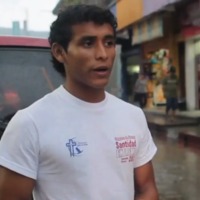
Jose
Mexico has one of the largest child labour forces in Latin America with 3.6 million children between the ages of 5 and 17 currently employed in some way. This has made children one of the most vulnerable groups of people subjected to labour exploitation in the country. 42.5 percent of children working in Mexico do not receive any income for their labour. The current prevalence of poverty in the country has meant that many families require children to contribute to the household income in order to survive. Moreover Mexico is home to thousands of street children who constitute a particularly vulnerable group often subjected to forced labour and sexual exploitation. Jose was just 7 years old when he ran away from a neglectful home environment and began living on the streets of Mexico. One day he was approached by a boy who offered him a place to stay. When he arrived at the house he was told that he would have to work to earn his keep. Jose was exploited for his labour, became addicted to drugs and was recruited by a gang who made him sell in exchange for feeding his addiction. Jose was rescued by a woman from an NGO and is now an ‘older brother’ in the organisation, working to help children like himself.
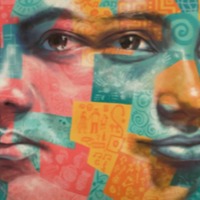
Jovie
In the Philippines, women and children are subjected to sexual exploitation in brothels, bars, and massage parlours, online, as well as in the production of pornography. The Philippines is an international hub for prostitution and commercial sex tourism – a highly profitable businesses for organised criminal syndicates. The demand for sex with children among both local and foreign men has continued to fuel child sex tourism. Rising internet usage rates, the availability of mobile phones and poverty has fostered online child sexual exploitation.
Jovie managed to escape her situation of sex slavery, but remained in prostitution making her own money. She explains that she wants to leave sex work altogether but, because of an addiction to the drugs that she was encouraged to use when she was enslaved, “it’s very hard to get out.”
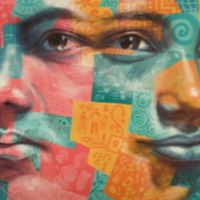
Cristy
In the Philippines, women and children are subjected to sexual exploitation in brothels, bars, and massage parlours, online, as well as in the production of pornography. The Philippines is an international hub for prostitution and commercial sex tourism – a highly profitable businesses for organised criminal syndicates. The demand for sex with children among both local and foreign men has continued to fuel child sex tourism. Rising internet usage rates, the availability of mobile phones and poverty has fostered online child sexual exploitation. Like many others who find themselves enslaved in situations of sexual exploitation, Cristy was told that she owed her employers all of the money she earned, and kept in debt bondage until the brothel was raided by police.
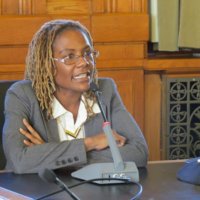
Tina
Trafficked into sex slavery in 1988 at the age of 14, from her hometown of Chicago, Tina Frundt is one of many survivors who become activists after liberation. Calling herself “a voice among the many who have been unheard,” she explained in an interview that “once people are aware of this issue, they can write letters to Congress, find out what areas have a trafficking problem, and take notice when they’re coming home from a club or are out late.” As a Street Outreach Coordinator for the Trafficking Intervention Program at Polaris Project, an organization that provides services to trafficking victims, she told Congress in 2005 that “sex trafficking of U.S. citizens is a reality in every city in the United States, including right here in our nation’s Capitol. Tina added: “if we are judging the efforts of other countries to combat trafficking, we certainly must aggressively fight the trafficking of our own citizens.” Tina decided to tell her story because, as she noted in an interview, “testimony sheds light on a problem that has been going on for so long in the US. Yes, it’s going on in other countries as well, but we also need to focus on what’s been going on here in the US for years.” She knows, as she explained to Congress, that “when we see a woman on the street here in the US, we think, ‘why is she doing it? This must be her choice. She can walk away any time she wants. She can leave.’ There is less sympathy for the domestic victims.” But like foreign national victims, Tina noted, domestic victims are also moved away from their homes. “They can’t go back because they don’t know where they are or they are ashamed to tell their families of what has happened to them… How can you ask help from the police when they have done nothing but arrest you, not recognizing you are a victim of sex trafficking?”
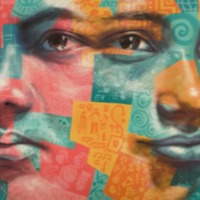
Jill
Born and raised in the US, Jill was trafficked into sex slavery from her home state of Ohio in 1981 at the age of 14. She made one attempt to escape, which led to punishment so severe that she never tried again. Contacting her family was out of the question, in part because she had left behind a dangerous home environment to become one of between 1.3 and 2.8 million runaway and homeless youth in America. These individuals are particularly vulnerable to sexual exploitation by traffickers: the Department of Justice estimates that 293,000 youth are at risk. The National Center for Missing and Exploited Children (NCMEC) estimates that “1 in 5 of the 11,800 runways reported to the National Center for Missing & Exploited Children in 2015 were likely sex trafficking victims.” Jill notes that after her liberation from slavery, she “still didn’t exist as anything more than a slave, except I was an escaped slave.” Jill still felt “less than human” after her three-year captivity ended, and struggled to recognize herself as a human individual. But narrating her story, she explains, is “an integral part of my recovery.”